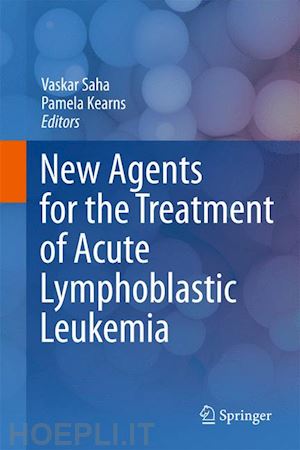
Questo prodotto usufruisce delle SPEDIZIONI GRATIS
selezionando l'opzione Corriere Veloce in fase di ordine.
Pagabile anche con Carta della cultura giovani e del merito, 18App Bonus Cultura e Carta del Docente
The majority of cancers present at a relatively advanced stage in which invasion within the primary organ is well established and metastases to lymph and distant organs are either clinically apparent or present at the microscopic level. However, it is increasingly recognized that the natural history of cancer formation is a long and complex path taking many years to develop to a clinically apparent stage in most cases. Furthermore, for most solid tumours there is a pre-invasive or intraepithelial stage of disease. This affords the opportunity for early detection and prevention of invasive disease and hence a cure. However, with this advancing knowledge comes a whole plethora of questions which will be explored in this monograph.
Firstly, we need to understand the global burden of pre-invasive disease and what the public health implications might be for wide-scale screening programmes. In the western world we already have experience of screening for cervical, breast, prostate and more recently colon cancer. As well as their potential benefits these programmes have financial and psychosocial implications which need to be carefully weighed. This is especially true since many pre-invasive lesions will not progress to cancer in a individual’s lifetime. In addition, there are questions concerning whether screening reduces the cancer burden or in fact distorts the survival figures through lead-time bias.
Secondly, at the level of epidemiology and molecular pathogenesis there are important questions regarding the aetiology of pre-invasive lesions; an understanding of which might lead to possible chemopreventive strategies. For example, it would be helpful to know the extent to which the likelihood of developing a pre-invasive lesion is influenced by lifestyle or genetic factors and how these factors influence the risk of progression to invasive disease. At the molecular level we need to understand the pathways and molecular mechanisms, both genetic and epigenetic, by which cells achieve the capacity to invade.
Thirdly, in order make clinical progress we need biomarkers to identify and risk stratify individuals with pre-invasive lesions. These biomarkers might be applied to the serum as in Prostate Specific Antigen in prostate cancer or be applied to tissue samples, such as oestrogen receptor status in breast cancer. In order to utilize biomarkers in the context of a screening programme there are issue around the invasiveness of the test as well as its positive and negative predictive value. With advances in molecular imaging there is now the exciting possibility of incorporating a molecular tag to a non-invasive imaging modality.
Fourthly, in order to justify screening early detection must be coupled to a treatment strategy. If the chemopreventive agent is very well tolerated, then as well as targeting high risk groups, one might consider treatment at the population level. Aspirin is one such drug which has been extensively assessed in the context of colon cancer chemoprevention trials. Trials of aspirin chemoprevention are now being applied to other cancers such as oesophageal adenocarcinoma and since many individuals take aspirin for .chemoprevention of cardiovascular disease the cancer incidence can be ascertained in these populations.
In order to understand the more general issues raised from the discussions above it is useful to consider disease specific examples. Our understanding of pre-invasive disease varies according to the organ site and there are lessons to be learned from these experiences. For example, there is now the prospect of a vaccine for cervical cancer with important questions about how this might be applied to the high incidence areas of the developing world. On the other hand, ductal carcinoma in situ is currently treated by mastectomy which is more radical than the treatment received by many women with invasive disease. Oesophageal adenocarcinoma, which is my own area of expertise is interesting because of the rapid rise in incidence in the western world and the clinically accessible pre-invasive lesion called Barrett’s oesophagus. However, most cases of Barrett’s oesophagus remain undiagnosed and it is not yet clear how to effectively diagnose, monitor and treat this condition without recourse to mass endoscopy with substantial cost implications.
In conclusion, in an era in which preventive medicine is a major concern for consumers, health-policy makers and politicians pre-invasive disease is likely to become a major part of cancer medicine.
1. The need for new agents - Tim Eden
2. Identifying pre-clinical agents - Shekhar Krishnan, Ashish Masurekar, and Vaskar Saha
3. Pre-clinical evaluation - Barbara Szymanska, Hernan Carol, and Richard Lock
4. Design of early phase trials - James Whitlock and Terzah Horton
5. Strategies for trial design and analyses - Grazia Maria Valsecchi
6. Overview on Molecular and Animal models of ALL - Michael Batey and Josef Vormoor
7. Apoptosis, BCL2 - Guy Makin and Caroline Dive
8. Targeting Stem Cells - Clare Pridans and Brian Huntly
9. Nucleoside Analogues - Pamela Kearns and Vaskar Saha
10. Flt3 Inhibitors - Ronald Stam and Rob Pieters
11. Tyrosine Kinase Inhibitors - Shaun Wilson
12. Monoclonal Antibodies - Arend von Stackelberg
13. Proteasome inhibitors - Joya Chandra and Claudia Miller
14. Targeting epigenetic pathways in ALL - Pamela Kearns
15. Incorporating new therapies in frontline protocols - Paul Gaynon and Theresa Harned











Il sito utilizza cookie ed altri strumenti di tracciamento che raccolgono informazioni dal dispositivo dell’utente. Oltre ai cookie tecnici ed analitici aggregati, strettamente necessari per il funzionamento di questo sito web, previo consenso dell’utente possono essere installati cookie di profilazione e marketing e cookie dei social media. Cliccando su “Accetto tutti i cookie” saranno attivate tutte le categorie di cookie. Per accettare solo deterninate categorie di cookie, cliccare invece su “Impostazioni cookie”. Chiudendo il banner o continuando a navigare saranno installati solo cookie tecnici. Per maggiori dettagli, consultare la Cookie Policy.